WiFi Blocker: 4 Ways to Secure Your Network

Have you ever faced a situation where someone uninvited was hogging your internet bandwidth? Or maybe your kids were staying online long past bedtime? A WiFi blocker is your go-to solution for managing and securing your wireless network.
With the ability to block unauthorized users and control device access, WiFi blockers are a vital tool for anyone wanting full control over their internet connection. In this guide, we’ll explore four proven WiFi blockers, and ensure your network is safe, fast, and only accessed by the right devices.

What is a WiFi Blocker?
A WiFi blocker is any tool, method, or technology that can restrict access to a wireless network for specific devices or users. These blockers work by either disconnecting devices directly from the network or stopping their ability to reconnect until you allow access.
How It Works
WiFi blockers operate in different ways depending on the method you use:
- Router-based Blocking: Filters access through admin control settings.
- App-based Blocking: Offers device-specific network restrictions.
- Hardware Solutions: Physically disrupt or disable wireless signals in an area.
By deploying a WiFi blocker, you ensure that your network remains secure and optimized, with only authorized devices having internet access.
Why Use a WiFi Blocker?
WiFi blockers offer more than just internet control, they provide security, efficiency, and peace of mind. WiFi blockers aren’t just for tech enthusiasts—they’re invaluable for a variety of scenarios:
- Enhanced Network Security: Unauthorized devices can compromise your network’s safety. A WiFi blocker helps prevent breaches and ensures that only trusted devices connect.
- Parental Control: Monitor and manage your kids’ internet habits by limiting WiFi access to specific times or apps.
- Better Network Performance: Overcrowded networks often slow down. By blocking unnecessary devices, you free up bandwidth for essential tasks like video streaming or work calls.
- Prevent Internet Misuse: Control over your network ensures no one is streaming or downloading large files unnecessarily during crucial hours.
Best WiFi Blockers to Enhance Network Security
In an era where internet access is essential yet sometimes needs regulation, WiFi blockers offer an effective way to control and manage connectivity. Whether for parental control, workplace productivity, or network security, these tools help restrict access and improve bandwidth efficiency. Here are some of the best WiFi blockers available today.
1. Using SafeMyKid App to Block Wifi
SafeMyKid is an all-in-one parental control and WiFi management app designed to help parents take charge of their children’s internet usage. While there are several parental control tools on the market, SafeMyKid stands out for its unique combination of advanced features, simplicity of use, and unparalleled flexibility. It's a must-have solution for parents who want to manage and monitor their child's digital presence while also restricting unwanted WiFi usage at home.

Why SafeMyKid is the Most Reliable WiFi Blocker
SafeMyKid is more than just a WiFi blocker—it’s a complete parental control solution designed to help you manage internet access effectively. Whether you want to limit screen time, prevent distractions during study hours, or protect your child from inappropriate content, SafeMyKid offers powerful tools to keep you in control.
- Customizable Restrictions – Set specific time limits for internet access, ensuring children stay focused on homework or sleep undisturbed.
- Remote Control Features – Block or allow WiFi access on connected devices even when you’re away from home.
- Comprehensive Reporting – Gain insights into browsing habits, app usage, and online activity, allowing you to make informed decisions about your child's digital well-being.
With SafeMyKid, you can effortlessly maintain a balanced and safe online environment.
Steps to Use SafeMyKid WiFi Blocker on Android and iOS Devices
Setting up SafeMyKid is quick and straightforward, whether you're using an Android or iOS device. With just a few simple steps, you can effectively manage WiFi access, monitor device activity, and create a safer online environment. Below, we outline the step-by-step process to get SafeMyKid up and running on both platforms.
Steps to Use SafeMyKid WiFi Blocker on Android Devices
Step 1. Visit the SafeMyKid website, Sign up, and create your account using your email address.
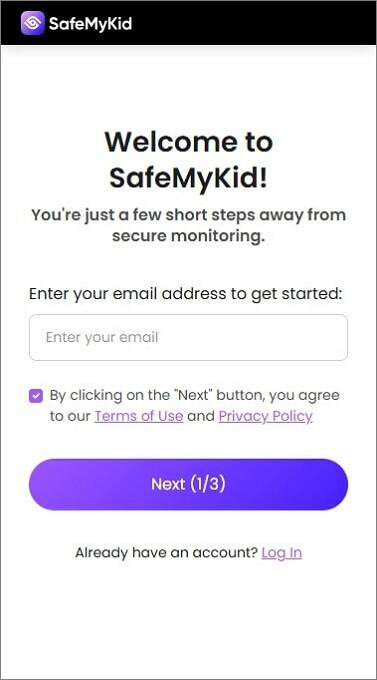
Step 2. Get the target Android device and set up the SafeMyKid app on the device.

Step 3. Begin to add the devices you want to block from using your WiFi to the blocklist.
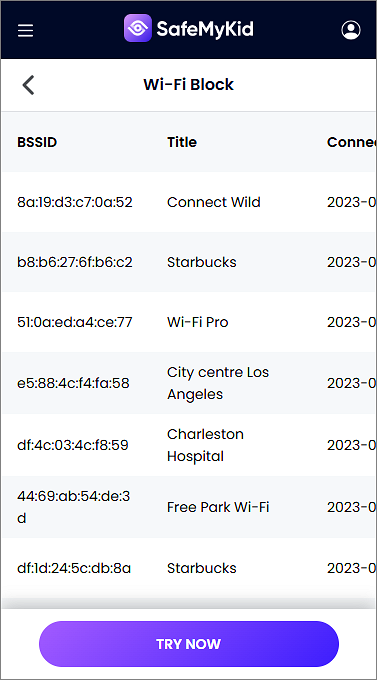
Steps to Use SafeMyKid WiFi Blocker on iPhones
Step 1. Sign up with your email and create a secure profile.

Step 2. No need to install any app! Simply set up SafeMyKid on the target iOS device using only the owner’s iCloud credentials.
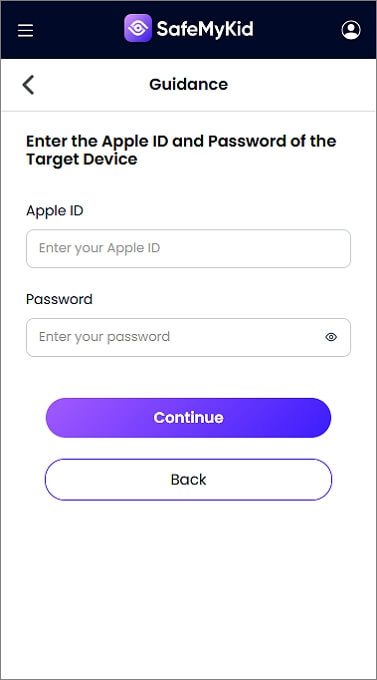
Step 3. Begin to use SafeMyKid to block unwanted devices from the online dashboard. You can add the devices you want to block to the blocklist.

Advantages of SafeMyKid:
- Unlike many alternatives, SafeMyKid requires installation only on monitored Android devices, making setup simple for parents.
- Compatibility with a wide range of devices ensures you can manage your home’s digital footprint effectively.
SafeMyKid isn’t just another WiFi blocker—it’s a complete network control system tailored to modern families. It bridges the gap between convenience and effectiveness, offering unparalleled management options.
Apps like WiFi Blocker simplify the process of managing devices on your network. These applications allow real-time control of who connects to your WiFi.
While these apps offer convenience, they often come with subscription fees, and not all features may be available in their free versions.
With features like app-specific restrictions, real-time updates, and a seamless setup process, SafeMyKid simplifies internet safety for busy parents. Whether you want to enhance focus, secure your network, or monitor online activity, SafeMyKid is the ultimate solution.
2. WiFi Blocker App
WiFi Blocker is a powerful network management app that allows you to control internet access for devices connected to your WiFi. It helps parents restrict online activity for their children and enables businesses to manage employee internet usage. The app offers real-time monitoring, device grouping, and scheduling options to block WiFi access at specific times.
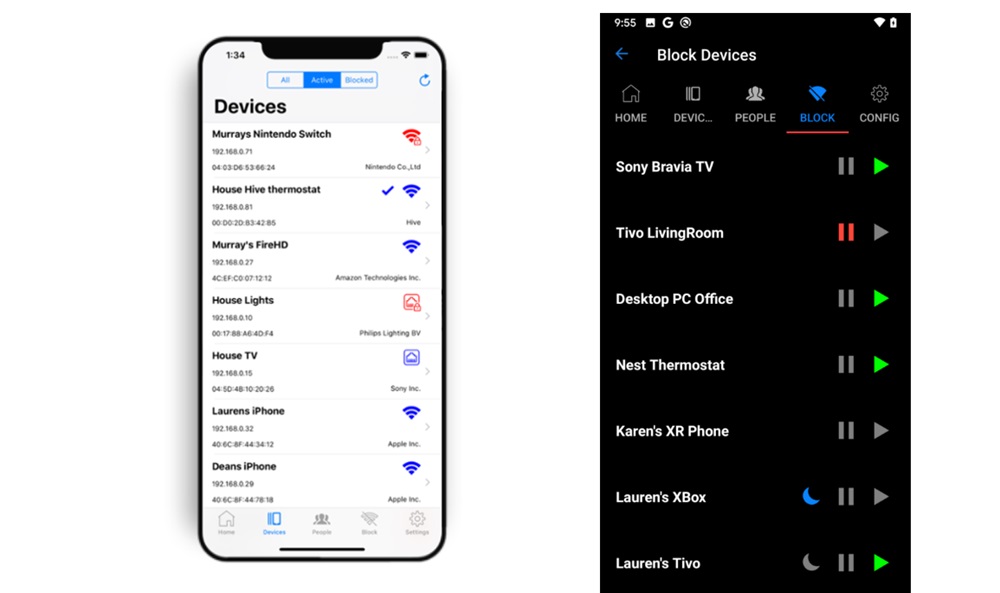
Features:
- Block or pause internet access for selected devices
- Set WiFi schedules for kids or employees
- Monitor data usage and device activity
3. NetCut
NetCut is a desktop application that allows users to disconnect unauthorized devices from their WiFi network. It works by analyzing the network, identifying connected devices, and providing an option to block them instantly. This tool is useful for securing your network against intruders or managing bandwidth usage.
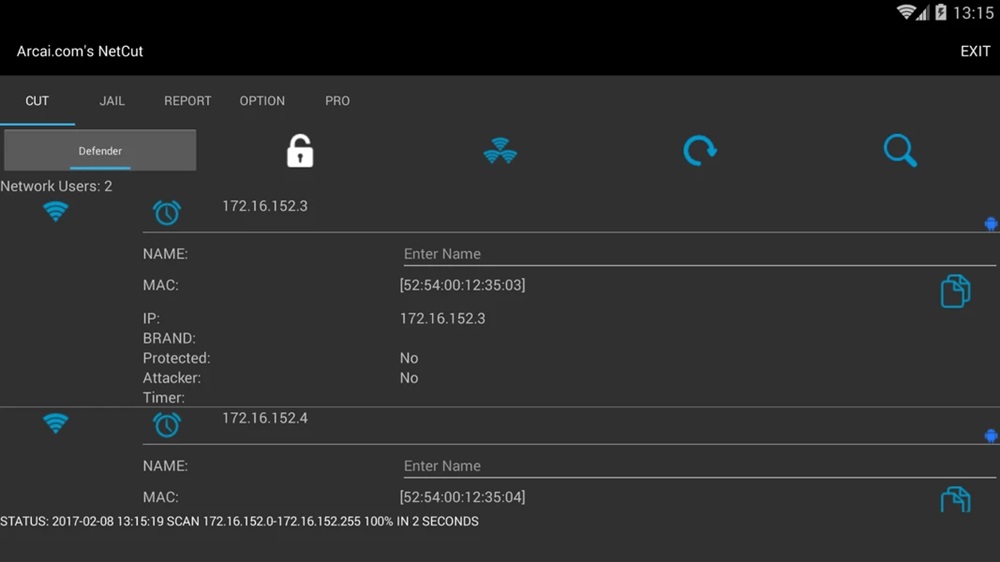
Features:
- Instantly block unwanted devices from the WiFi
- View all connected devices and their IP/MAC addresses
- Works with both wired and wireless networks
4. Fing Network Tools
Fing is a widely used network security and monitoring tool that provides WiFi-blocking features. It helps users detect unauthorized connections, manage access, and optimize network performance. The app is available for both iOS and Android and includes real-time alerts for new devices joining your network.
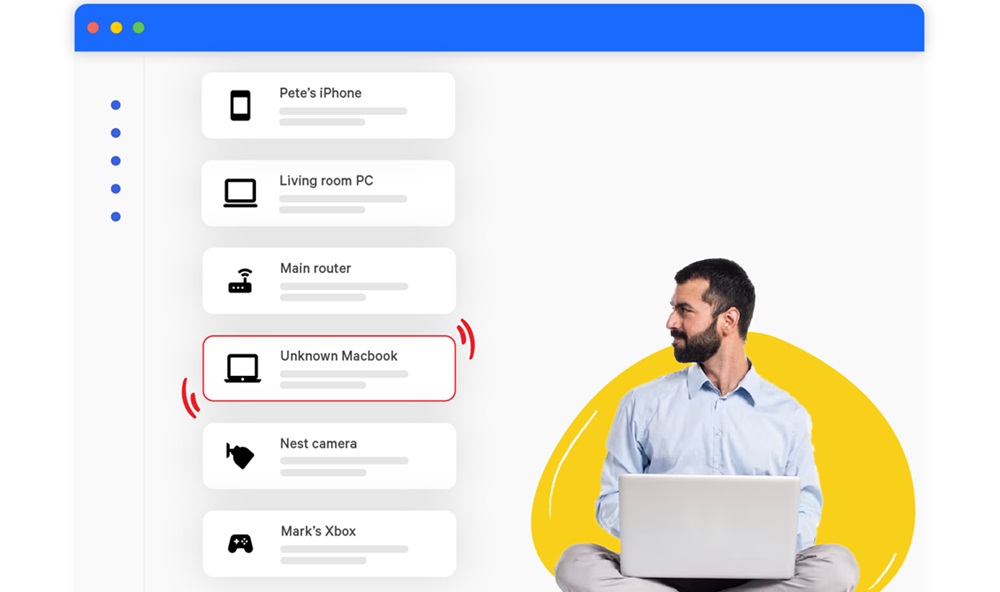
Features:
- Identify and block unknown devices
- Receive security alerts for potential network threats
- Perform speed tests and network diagnostics
4 Other Methods to Block WiFi Access
Controlling WiFi access is essential for managing internet usage, enhancing security, and preventing unauthorized connections. Below are four proven ways to block WiFi access and maintain better control over your internet connection.
1. Router Settings
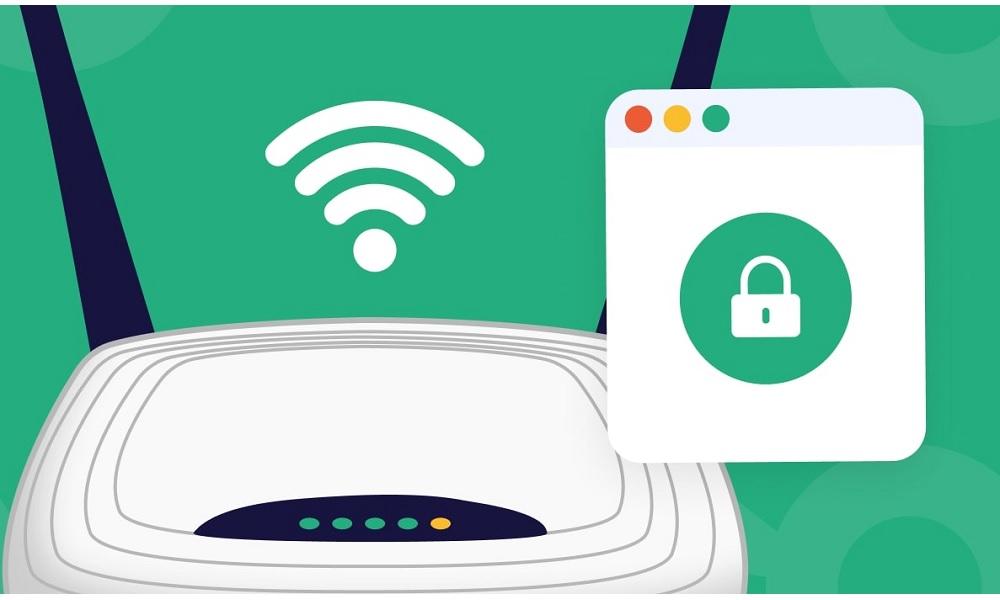
Router settings play a crucial role in managing and optimizing your WiFi network. From blocking specific devices to customizing access controls, configuring router settings provides a robust and user-friendly way to ensure security, privacy, and efficient bandwidth usage. This section explores the essential router settings that can help you control WiFi access effectively, enhance network performance, and secure your data.
How to Block WiFi via Router Settings
- Log into your router’s admin page using its IP address (commonly found on the device).
- Navigate to the “Access Control” or “Device Management” section.
- Identify the device you want to block by its MAC address or hostname.
- Select “Block” or “Restrict” and save the changes.
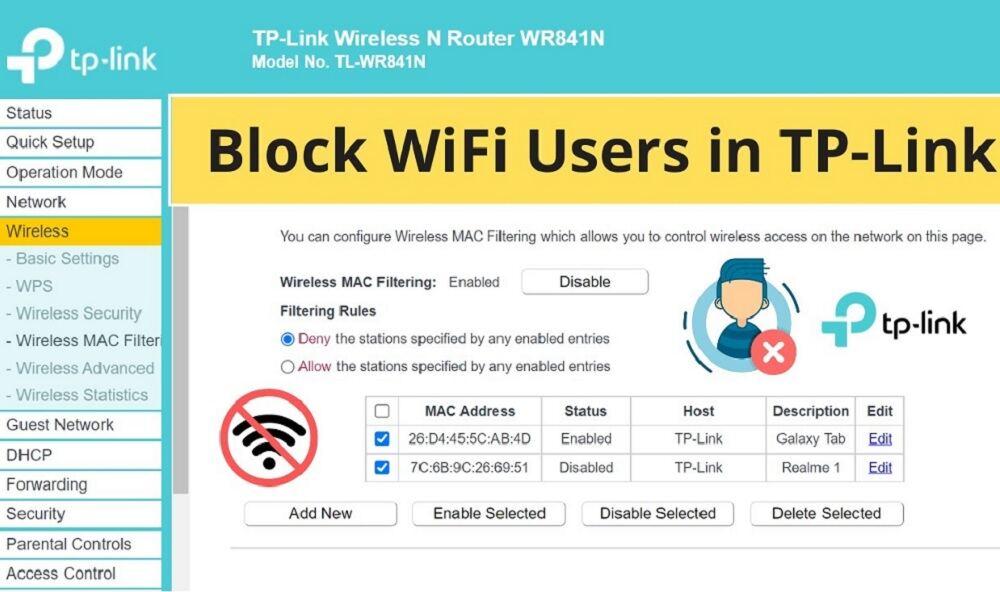
Advantages:
- No need for additional software.
- Direct control over all connected devices.
Disadvantages:
- Router settings can be intimidating for beginners, requiring some technical knowledge and persistence to navigate correctly.
2. Signal Jammers
Signal jammers, also known as wireless jammers, are devices that block or disrupt wireless communication signals within their effective range. These devices are commonly used to prevent unauthorized or unwanted connections to a WiFi network.
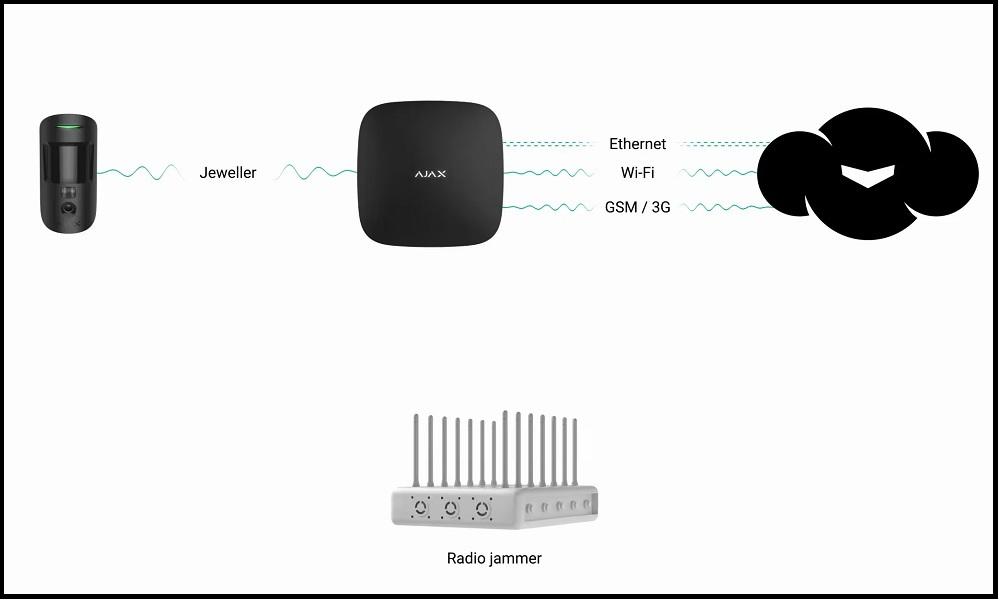
While signal jammers are highly effective in blocking WiFi access, their legal restrictions, ethical considerations, and non-selective nature make them impractical for most users. It’s advisable to consider alternative methods, like router settings or third-party apps, which offer more control and don’t violate laws. However, if you operate in a jurisdiction where signal jammers are legal and absolutely necessary, ensure responsible and limited use.
3. Using Guest Networks
A guest network is a secondary WiFi network set up on your router, designed to provide internet access for visitors while keeping your main network private and secure. This feature is especially helpful for users looking to control WiFi access in a simple, legal, and non-disruptive way. While not as direct as WiFi blockers, guest networks offer a layer of control that benefits both hosts and guests.
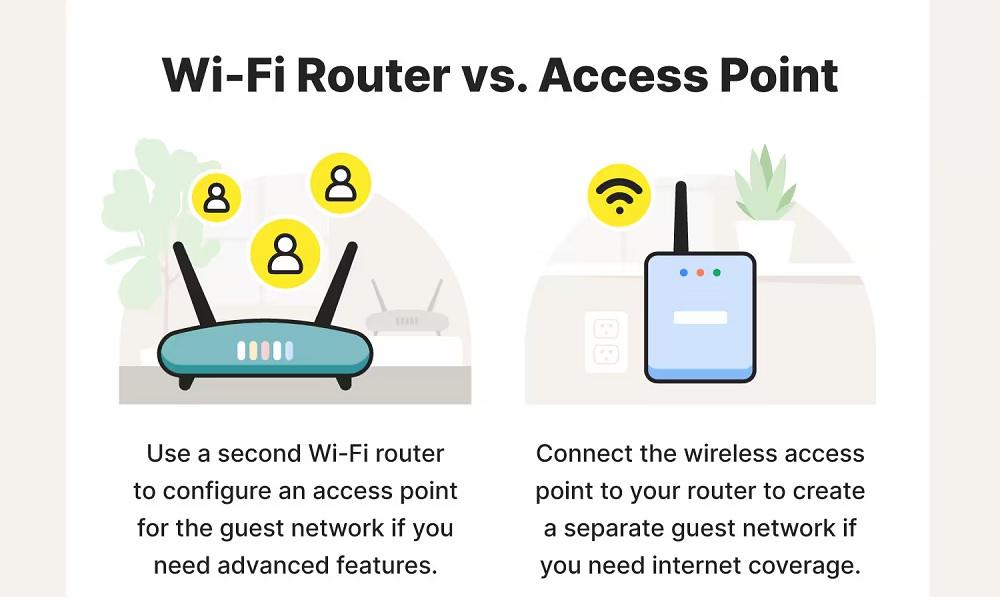
Most modern routers have the option to create a guest network. Unlike your main network, the guest network operates as a separate entity with a unique SSID (network name) and password. Devices connected to this network are usually isolated, meaning they cannot communicate with devices connected to the main network.
4. Firewalls for Advanced Users
A firewall serves as a fundamental component in securing your WiFi network by monitoring and controlling incoming and outgoing network traffic. It acts as a protective barrier between your internal network (home or office WiFi) and external networks (like the Internet). By applying firewall rules, you can protect your devices from unauthorized access, cyberattacks, and malicious software that can compromise your security.
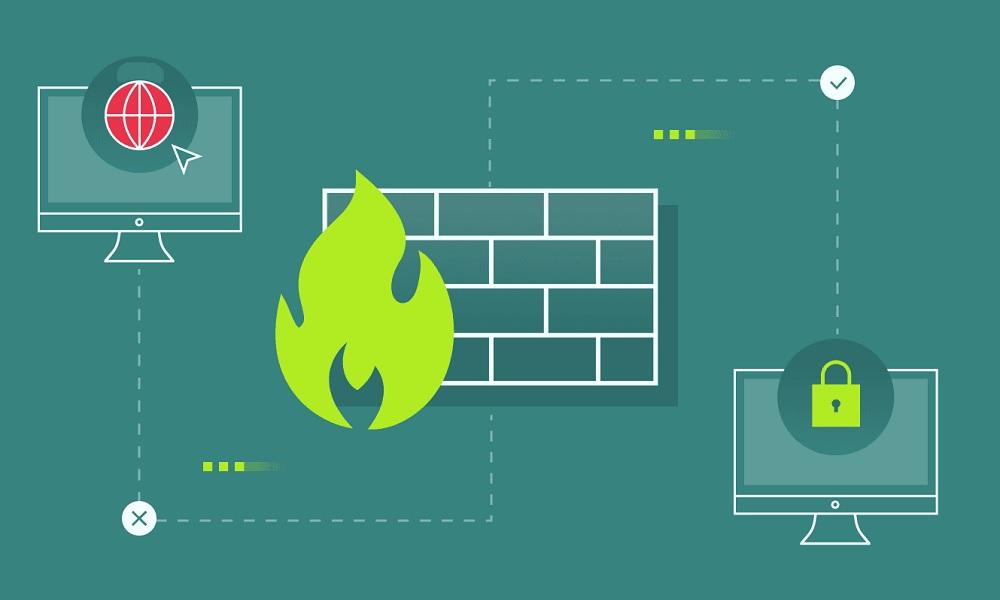
Limitations and Ethical Considerations of WiFi Blocking
While WiFi blocking is incredibly effective for managing network access, it comes with certain limitations and ethical concerns that must be carefully considered.
1. Ethical Concerns
Controlling or restricting someone’s internet access raises ethical questions, especially in shared spaces like offices, schools, or public areas. While parents may justifiably use WiFi blockers to regulate children's internet usage, using such tools to deliberately disrupt access for employees, tenants, or the general public can be seen as an overreach of control. Transparency in implementing these measures is crucial to maintaining trust and fairness.
2. Legal Implications
Many countries have strict regulations against certain WiFi blocking methods, particularly the use of signal jammers. In places like the United States and most of Europe, signal jammers are illegal due to their potential to interfere with emergency communication services and other critical infrastructure. Businesses and individuals should avoid these methods and instead rely on legally approved alternatives such as router settings, firewall rules, and parental control software.
3. Technical Limitations
WiFi blocking methods vary in effectiveness depending on the technology used:
- Router-based restrictions may not always work against tech-savvy users who can bypass them using VPNs or mobile hotspots.
- MAC address filtering can be circumvented if a user spoofs their device’s MAC address.
- Parental control software may require regular updates to keep up with new online platforms and circumvention methods.
4. Unintended Consequences
Blocking WiFi access can sometimes have unintended side effects. For example:
- In workplaces, excessive WiFi restrictions may frustrate employees, reducing productivity rather than improving it.
- In shared accommodations, blocking internet access without consensus can create disputes among residents.
- For security purposes, improperly configured firewalls or blocking tools can unintentionally disrupt essential services, preventing legitimate users from accessing necessary resources.
4 Best Practices for Ethical and Effective WiFi Blocking
To ensure compliance and fairness when managing internet access, consider the following best practices:
- Use built-in router controls instead of unauthorized jamming devices.
- Inform users about network restrictions to avoid conflicts.
- Implement fair usage policies rather than outright blocking access.
- Regularly review restrictions to ensure they are still necessary and effective.
By adopting ethical and legal methods of WiFi blocking, individuals and organizations can maintain network security and control without violating user rights or regulatory guidelines.
Frequently Asked Questions (FAQs) on WiFi Blocker
Understanding how WiFi blockers work and their benefits can help you make the most of these tools. To address common concerns, here are some frequently asked questions about WiFi blockers and their functionality.
1. How does a firewall enhance WiFi security?
A firewall filters out malicious traffic, monitors network activity, and blocks unauthorized attempts to access your network. It acts as a protective barrier between your device or network and external threats like hackers, viruses, and malicious software.
2. Is it legal to block a WiFi signal in public places?
No, blocking WiFi signals in public spaces (such as cafes, offices, etc.) is illegal in most countries, as it can disrupt legitimate access. Personal WiFi control, however, is entirely legal when used responsibly within your private home or business network.
3. Can I block WiFi access for specific apps on my devices?
Yes, some advanced router and firewall configurations allow you to restrict certain applications or services from accessing your WiFi. For mobile devices, specialized apps like SafeMyKid can also block internet access for certain apps.
4. Does blocking WiFi improve network speed?
In some cases, blocking unnecessary devices or limiting certain activities on the network can free up bandwidth, which may lead to improved overall speed. For instance, restricting devices that stream videos or download large files can enhance performance for more critical tasks.
5. Can I use a mobile device as a WiFi blocker?
Yes, certain apps on Android and iOS, such as SafeMyKid, allow you to block WiFi access on mobile devices. These apps can help control WiFi usage, especially for kids or unwanted devices, by restricting or monitoring internet access directly from your phone.
Conclusion
Using a WiFi blocker to take control of your network doesn’t have to be overwhelming. From router settings to SafeMyKid’s powerful parental controls, you have a range of options to suit your needs.
By blocking access selectively, you’ll enjoy a safer, faster, and more efficient network for work, entertainment, and family use. Choose the method that works best for you and take charge of your digital world today.



